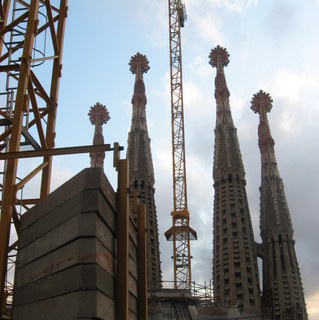This post continues where “the power to create” left off. I’m going to expand on what it means to rely on the phrase “the power to create mathematics”.
Creating mathematics has a funny ring to it, mostly because we assume that math is not something that you create. It’s there already, and you find it — or more likely, someone points it out to you, and you (hopefully) come to recognize it as sound.
We recognize that some math groundwork exists in our students already, otherwise how could they understand? We’d simply be telling them to follow arbitrary rules that had no significance or coherence — oh wait! This is what much math instruction becomes, when we assume our students have no inherent capacity for math. In that model, while we (math teachers) might know for ourselves that there’s a deeper meaning, but rarely does a teacher feel inclined or free to explore that with students.
The deeper meaning that teachers know and students intuit (if given the space) is the starting point for creating mathematics. Math is expression of the deep structure of how we see and experience the world. Mathematical objects — patterns, shapes, systems — have the uncanny capacity to seem so objectively true that it’s most convenient to describe them as outside of us (and so we might speak of mathematical discoveries), but at the same time they are subjective, coming into existence only when a human subject creates them.
Math is objective because it is shared between us in a most subjective way. Following Kant, it’s not something we see out in the world, it is precisely the lens through which we view the world. To borrow a line from Tom Stoppard, math is a mystical experience shared by everyone.
This is a philosophical distinction that has a huge impact on how math students approach math. Math is a creation — an unique expression of deep structure and meaning. When math is created by a student, she or he will likely use their own symbols and structures, but the ideas are so a part of us that I have no doubt that my students can construct them if given the proper resources and environment.
In this setting, my role as a teacher is not to give them, or even to guide them through how beautiful it us — both of those hand over all attention and authority to the teacher. Students have authority of their own in the creation of math. My role is to help the math they create cohere, internally and externally. The former is begun in their interactions with one another (see my next post). The latter is mostly introducing them to common language for ideas they’ve been developing.
Math viewed in this way is precisely a liberal art. Why we don’t teach it this way is anyone’s guess (well, I have a few guesses).
And yet, I can’t shake the feeling that math also has a way of addressing us, of surprising us, and of confronting us. Viewed this way, math bears a striking resemblance to psyche and spirit, some aspects of which I’ve discussed previously. I don’t know, I have to think more about that.
Next time, creating math together.
